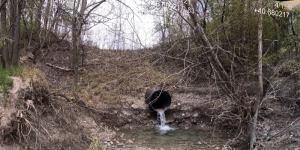Blog Post
Environmental Crimes Bulletin March 2024 Week 1
In this issue:
- United States v. Brian J. Wallace, No. 1:22-CR-00031 (M.D. Ga.), AUSAs Leah McEwen and Elicia Hargrove
- United States v. Brek Pilling, et al., Nos. 4:21-CR-00218, 4:22-CR-00282 (D. Idaho), ECS Senior Trial Attorney Cassie Barnum, AUSA Francis Zebari, and ECS Law Clerk Amanda Backer
United States v. Brian J. Wallace, No. 1:22-CR-00031 (M.D. Ga.), AUSAs Leah McEwen and Elicia Hargrove
On February 28, 2024, following a three-day trial, a jury found Brian J. Wallace guilty of making false statements about his knowledge of whether a hazardous waste was pumped into the city of Albany, Georgia’s sewer system (18 U.S.C. § 1001(a)). Sentencing is scheduled for August 14, 2024.
Wallace was a federal contractor who served as the Head of the Environmental Services and Public Works Division at the Marine Corps Logistics Base in Albany, Georgia (MCLBA). The MCLBA rebuilds and repairs ground combat and combat-support equipment. Refurbishing and repairing equipment requires stripping the paint, which generates waste that is processed by the MCLBA’s industrial wastewater treatment plant (IWTP). The IWTP discharges treated wastewater to the City of Albany under the terms of its permit. The sludge is treated and stored as an F109 RCRA-listed waste.
The IWTP operates a rake-style clarifier (or settling tank) that separates liquids from solids. In May 2021, the rake malfunctioned, requiring the removal of both liquid and semi-solid wastes for repair. MCLBA contracted with Horizon Environmental Services (HES) to remove the material in order to make the repairs. HES was not authorized or permitted to handle hazardous waste.
Employees pumped 30,000 gallons of the liquid layer down a manhole rather than routing it back through the IWTP. They pumped the sludge from the tank into sludge boxes, and then transported it to the HES facility without properly manifesting the shipment. They stored the sludge boxes at HES for approximately 10 days. The employees then returned the sludge boxes to MCLBA and abandoned them.
Upon questioning, Wallace, as the MCLBA compliance official, denied knowing employees pumped the liquids down the manhole despite the fact he directed them to do so.
A court previously sentenced Horizon Environmental Services, LLC, to pay a $10,000 fine, complete a two-year term of probation, and pay $900 in restitution to MCLBA, which was the amount the company was paid to do the job.
The U.S. Environmental Protection Agency Criminal Investigation Division conducted the investigation.
United States v. Brek Pilling, et al., Nos. 4:21-CR-00218, 4:22-CR-00282 (D. Idaho), ECS Senior Trial Attorney Cassie Barnum, AUSA Francis Zebari, and ECS Law Clerk Amanda Backer
On March 3, 2024, the eve of trial, Brek Pilling pleaded guilty to a Clean Act negligent endangerment violation (42 U.S.C. § 7413(c)(4)). Sentencing is scheduled for May 22, 2024.
Pilling and co-defendant Brian Tibbets failed to inspect a facility for the presence of asbestos prior to commencing a demolition project. Tibbets previously pleaded guilty.
In late 2017, Pilling and Tibbets purchased two buildings in Burley, Idaho, in order to demolish them and build a parking lot. During a walkthrough with city officials, the building inspector pointed out likely asbestos-containing material (ACM). In further communications with the city (prior to negotiations breaking down), other city employees also warned the owners about the presence of ACM and the need for remediation. The owners took “samples” from the buildings that included wood, brick, and stone (but no building materials that could plausibly be composed of ACM) and submitted those to a forensic lab for analysis.
In January 2018, both buildings caught fire under suspicious circumstances. After seeing the fire on the news, a local contractor contacted the owners and offered to demolish what remained of the buildings using his own asbestos inspector and remediation company. The owners accepted the contractor’s bid but said they would hire their own remediation company. Two days later, the contractor saw the buildings under demolition. The owners chose to hire an individual to knock them down without conducting any asbestos abatement. During the demolition, several truckloads of debris were hauled to a nearby landfill. The owners lied to an inspector during a subsequent conversation about onsite testing. The National Enforcement Investigation Center analyzed samples taken from the sites and found multiple areas with ACM. EPA ultimately oversaw the removal of approximately 860 tons of asbestos-contaminated demolition debris from the site, at a cost of approximately $845,000.
The U.S. Environmental Protection Agency Criminal Investigation Division conducted the investigation.
Updated April 25, 2024

 U.S. Department
of Justice
U.S. Department
of Justice

